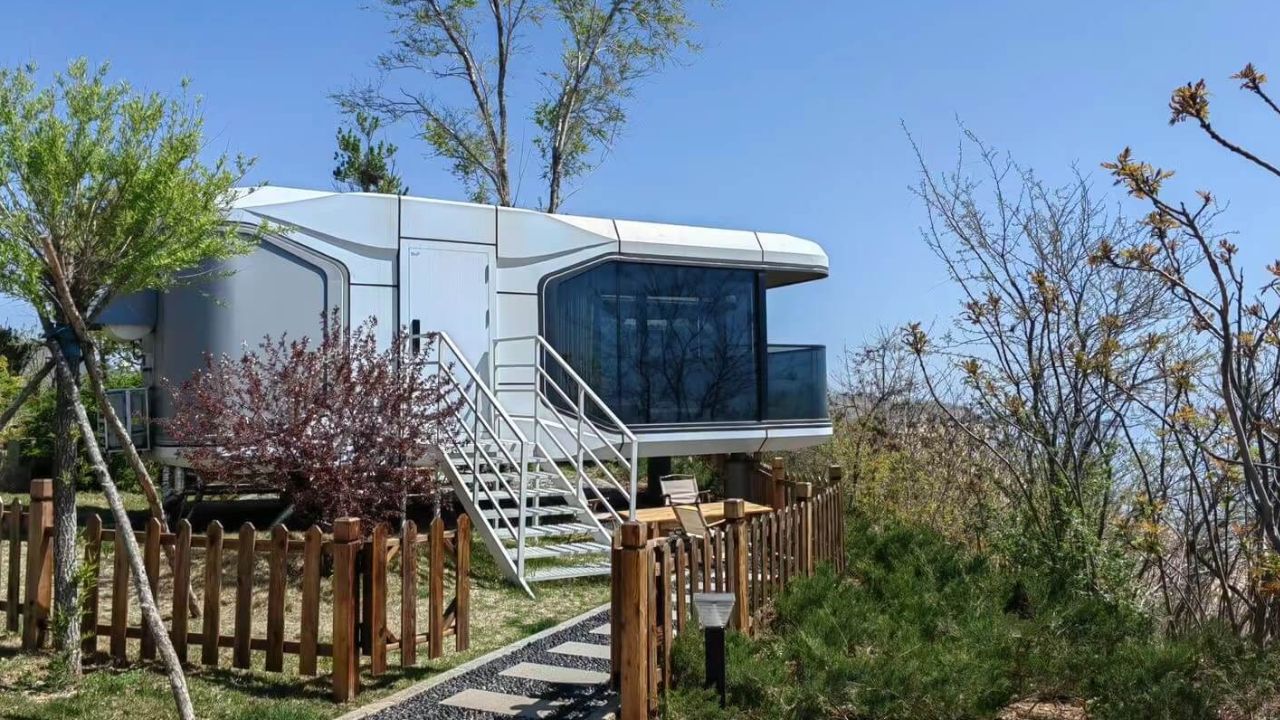Queenly likes to share her knowledge of society with others. She is always reading up on the latest news and trends, so she can provide insights and perspectives that help people understand the world around them. Coreen is a great listener, and she loves to help people grow and develop.

In an era where urban space is at a premium, capsule houses have emerged as a novel solution to address housing crises and provide affordable, minimalist living options. These compact, self-contained units offer a futuristic approach to housing, characterized by their small footprint and innovative use of space.
However, with the rise of this unorthodox living style, potential residents and urban planners alike may question: Are capsule houses truly safe? Let’s dive into the article to view more details about it.
Understanding Capsule Houses
The advent of minimalist dwellings, often referred to as capsule houses, pod homes, or micro-homes, can be traced back to a design philosophy that originated in Japan in the 1970s. These compact units, preassembled and ready for habitation, encapsulate the essentials for daily living within a modest footprint. Typically, these arrangements afford a sleeping area, provisions for storage, and, occasionally, a condensed space for meal preparation. The modern take on these homes has evolved to include technology-driven features such as automated systems for lighting, temperature control, and multimedia.
What Makes Capsule Houses Safe?
Structural Safety Considerations
When it comes to ensuring the inviolability of living spaces, particularly in the emerging niche of capsule accommodation, structural solidity stands as the chief element of consideration. Companies that fabricate state-of-the-art capsule abodes typically prefer the use of robust yet airy fabrics, including toughened glass fibres, metallic compounds with superior tensile strength, and hybrid materials carefully engineered to confront and withstand diverse environmental challenges. Furthermore, it’s imperative that these compact havens conform to the stringent requisites of municipal habitability guidelines, which encompass explicit benchmarks for resilience against strong gusts and tectonic movements.
To authenticate the reliability and fortitude of these dwellings under harsh conditions, an exhaustive array of trials is embedded in the manufacturing workflow. These examinations are crafted to mimic harsh climatic adversities and ground tremors, certifying that in the face of nature’s fury, the capsule homes stand as a bastion of security for those within.
Fire Safety and Prevention
Given the compact nature of capsule houses, fire safety is a critical concern. To ensure safety without compromising space efficiency, integrating fire prevention measures is essential in designing these homes. This involves using fire-resistant materials, installing smoke detectors, and incorporating fire suppression systems such as sprinklers. The limited space also demands special attention to layout and ventilation paths, which can help prevent the rapid spread of fire and provide escape routes.
Security Measures
Security in small living spaces goes beyond physical materials and into the realm of digital security and privacy. Many modern capsule houses are equipped with advanced security systems, including biometric locks and surveillance systems that offer residents a sense of safety. Additionally, the integration of smart technology allows for remote monitoring, ensuring that occupants can maintain their security anywhere, anytime.
Environmental Health and Ergonomics
The health impacts of living in reduced spaces are also a vital aspect of the safety of capsule houses. Good design prioritizes not only spatial efficiency but also ergonomic living conditions. This includes adequate natural light, sound insulation, and proper ventilation systems that filter air and control humidity, reducing the risk of mould and ensuring a healthy indoor environment.
Community Response and Emergency Readiness
In the event of an emergency, the response effectiveness in a community of closely set capsule houses could differ from that in traditional housing settings. Therefore, planning for emergencies, including accessible escape routes, clear signage, and regular safety drills, becomes even more crucial. Community planning should incorporate these aspects to enhance safety and ensure quick and efficient responses to emergencies.
Final Thoughts: Are Capsule Houses Safe?
Yes, modern capsule houses can be safe, provided that they are designed with meticulous attention to detail and adhere to all applicable safety standards. As urbanization increases and more people turn to capsule houses as a viable housing option, continuous improvements in design and technology will further enhance the safety and livability of these innovative homes.
Embracing capsule houses might be seen as a bold move today, but with ongoing technological advancements and stringent safety protocols, these compact living spaces can offer a secure, sustainable alternative for urban dwellers seeking affordability without compromising on safety.
